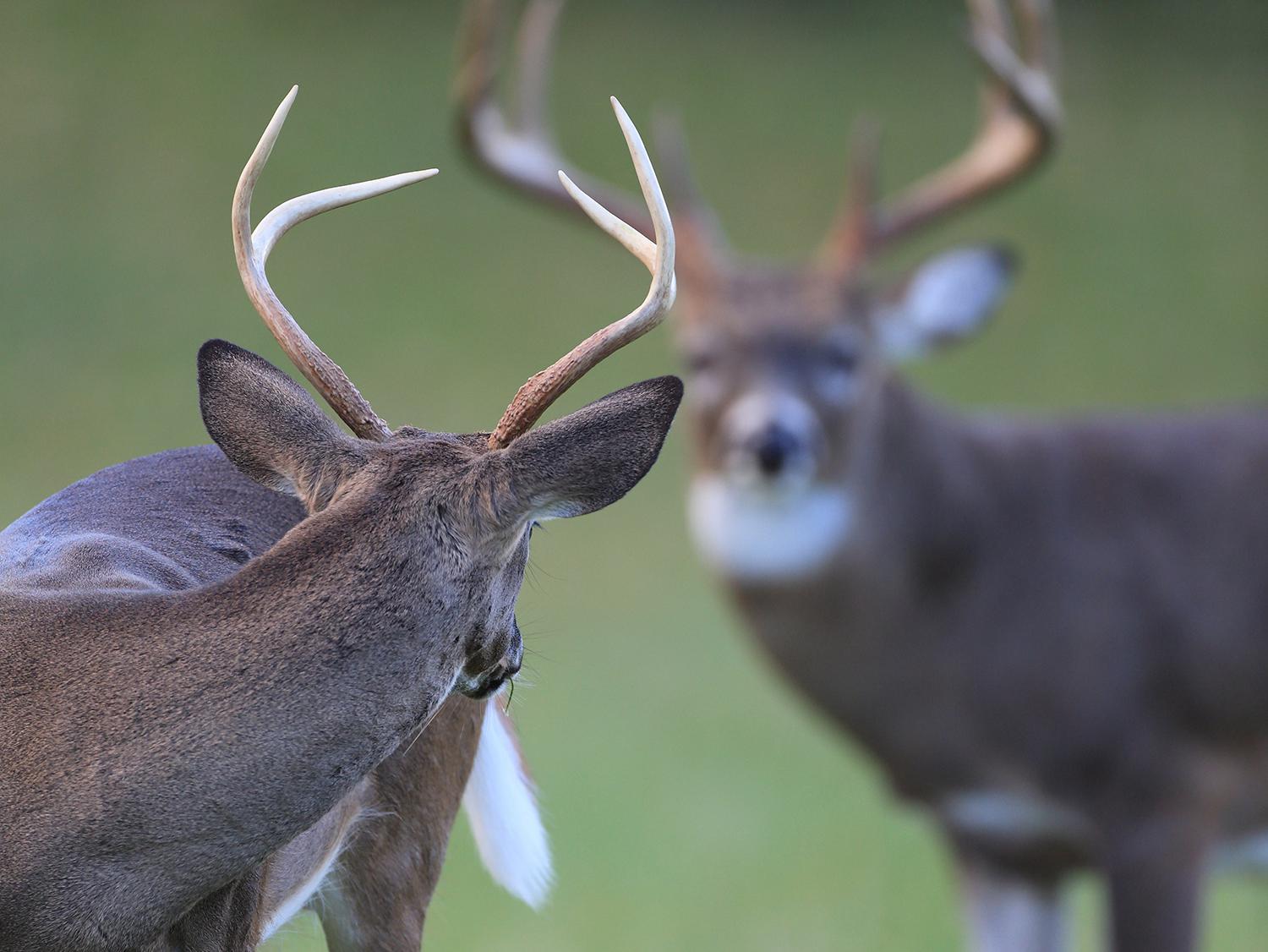Another thing that must be considered is, what does social dominance means for an individual buck? All it really means is that in a conflict over an individual estrus doe, the dominant buck wins. However, whitetails have a VERY unusual breeding sequence that appears to guarantee one dominant male cannot breed all of the does in the area. Other ungulates (animals that chew their cud) all use a bull-and-harem social structure, where a dominant bull - who establishes his dominance through fighting and intimidation - collects a harem of all of the available females in the area, and the bull breeds all those females. This is many species means of passing on "superior" genetics. In theory, the bull has superior genetics because he is bigger and meaner than the other males he defeats. However, whitetails have a very different and very unique breeding process. All the females of a doe social unit are related to each other. They are all mothers, sisters, daughter, grand-daughters, etc. to each other. This female social unit has a genetic timing for their estrus. What this means is all of the females in that group come into estrus at about the same time. Because an individual doe requires a buck to chase her and "court her" for 24-48 hours, and all of the does come in and go out of estrus within days of each other, one buck physically cannot breed all those does. In fact, I strongly believe this is critical to what makes the white-tailed deer so adaptable. because one buck cannot breed all of the does in a social unit, they are all bred by different bucks. This produces tremendous genetic diversity within the offspring of that doe social unit. All the offspring of that one social unit will have the same lineage on their mother's side, but all have different genetics on their father's side.
DNA studies of white-tailed deer find they are one of the most genetically diverse mammal species known. I believe THAT is their species-specific survival mechanism. No matter what conditions arise, every local population has so much genetic diversity that just by chance, some will perform well. That is why whitetails stocked in locations around the world have done so well, while other ungulate species do not. This is also why whitetails naturally have such a vast range, from the boreal forests of the far north to the jungles of Central America. No matter the conditions, the massive genetic diversity within populations mean some will be naturally adapted to those new conditions, even extreme conditions.
But all of this means that social dominance isn't as important with whitetails as it is with other species, like mule deer and elk. Dominant male whitetails don't pass on their genetics at the same level as these other species. Instead of developing a system of passing on "superior" genetics through a dominant male, whitetails have developed a system that guarantees maximum genetic diversity as a long-term species survival method.


